As city spaces grow smaller, finding ways to incorporate green spaces has become essential. Urban gardening through container planting offers a perfect solution for city dwellers who want to grow their own vegetables in limited spaces. Whether it’s a balcony, windowsill, or rooftop, container gardening makes it easy to grow fresh, organic produce right at home. In this guide, we’ll explore everything you need to know to start and maintain a successful vegetable container garden, helping you harvest the best yields from your urban oasis.
Why Choose Container Gardening?
Container gardening has become a popular choice for urban residents looking to maximize limited space. Growing vegetables in containers allows for flexibility, making it possible to rearrange plants based on light, water, and temperature needs. It’s also a fantastic option for those who rent, as containers can be moved if you change locations. Container gardening provides full control over the growing environment, which is crucial for optimal vegetable growth in city environments where natural soil may be scarce or unsuitable.
Advantages of Container Gardening for Urban Settings
- Space Efficiency: Container gardens can thrive in compact spaces, from small balconies to indoor window sills, making it accessible for apartment dwellers.
- Mobility: Containers allow for easy relocation, so you can optimize sunlight and protect plants from harsh weather when needed.
- Easy Maintenance: Containers simplify maintenance, as they can be easily reached and managed, reducing the strain of traditional in-ground gardening. See our guide to easy-to-grow vegetables for beginners.
- Soil Control: Unlike in-ground planting, container gardening allows you to customize soil for each plant, enhancing growth conditions and nutrient intake.
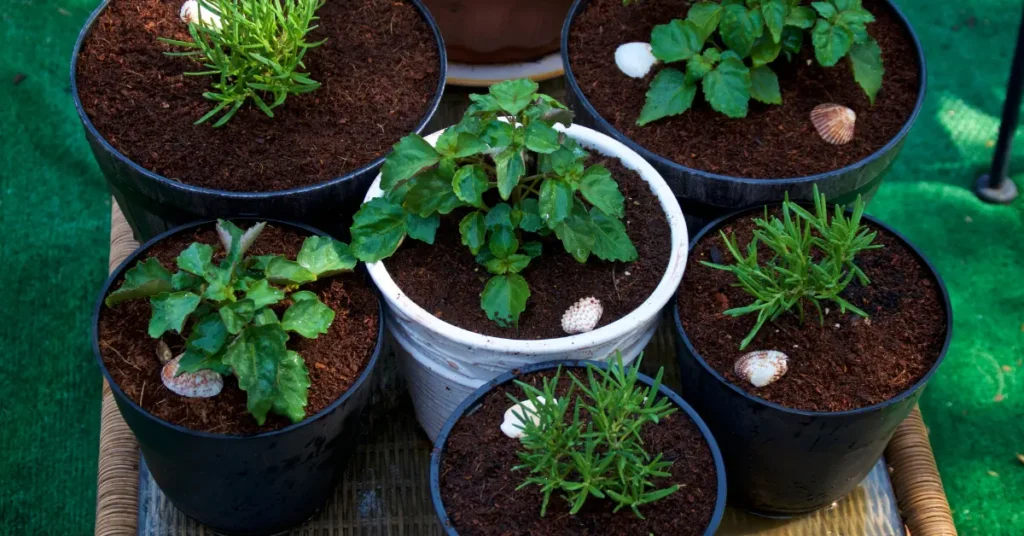
Key Vegetables Ideal for Container Growth
While many vegetables grow well in containers, certain types are particularly suited to this gardening style. Leafy greens such as spinach and lettuce, compact fruiting plants like tomatoes and peppers, and root crops such as radishes and carrots are all excellent choices. For an in-depth look at which vegetables thrive in containers, check out this helpful resource. They adapt well to container life, require minimal space, and produce high yields, making them perfect for urban gardeners aiming to maximize their harvests.
Getting Started with Container Gardening
Starting a container garden is easier than you might think, but choosing the right containers, soil, and plant varieties is essential. Each plant has specific needs, so consider the size and type of container that will allow roots ample room to grow. Additionally, opting for high-quality, organic soil with proper drainage is key to ensuring healthy plant growth. Learn about companion planting to enhance your container garden’s productivity and support plant health.
Selecting the Right Containers for Various Vegetables
When it comes to choosing containers, size matters. Vegetables with shallow roots, like lettuce, can grow well in smaller pots, while deep-rooted plants, such as tomatoes, need larger containers. Popular container options include plastic, terracotta, and fabric pots, each offering unique benefits:
- Plastic Pots: Lightweight, affordable, and durable, plastic pots are easy to move around but may heat up quickly in direct sun.
- Terracotta Pots: Known for breathability and aesthetic appeal, terracotta is ideal for plants that need steady moisture release but can be heavy. For more on types of containers and their benefits, visit Gardening Know How.
- Fabric Pots: Fabric or grow bags provide excellent drainage and root aeration, making them ideal for larger vegetables needing a strong root system.

Essential Tools and Supplies for Container Gardening
Starting with the right tools ensures an enjoyable and productive gardening experience. While container gardening requires fewer tools than traditional in-ground gardening, having a few key items can make the process easier. Consider investing in a small trowel, hand rake, and pruning shears for basic maintenance, along with gloves to protect your hands during planting and harvesting. Additionally, sustainable tools, such as reusable plant markers, organic fertilizers, and self-watering systems, are helpful for keeping plants healthy while minimizing environmental impact.
Overview of Gardening Tools for Small Spaces
- Small Trowel: Essential for planting seeds and transplanting seedlings into containers. Visit our guide to essential gardening tools for more details.
- Hand Rake: Useful for aerating the soil in containers and ensuring proper drainage.
- Pruning Shears: Necessary for trimming plants and maintaining healthy growth, especially for tomatoes and peppers.
- Self-Watering Pots: Great for busy gardeners, these pots prevent over- or under-watering by maintaining consistent moisture levels. See Good Housekeeping’s roundup of self-watering pots to find a fit for your garden.
Tips on Sustainable Gardening Tools and Supplies
Adopting eco-friendly practices in container gardening is easy with the right tools. Choose biodegradable pots for seedlings, organic compost for soil enrichment, and recycled containers to reduce waste. Avoid chemical pesticides by using natural alternatives like neem oil, which helps keep pests at bay without harming the environment. Learn more about sustainable practices in gardening and find tips for a greener urban garden. By opting for sustainable supplies, you contribute to a healthier urban ecosystem and enjoy gardening practices that support both plant health and the planet.

Top Vegetables for Container Gardening
Growing vegetables in containers is an effective way to bring fresh produce right to your doorstep. Some vegetables perform exceptionally well in container environments, producing great yields in smaller spaces. Below, we explore the best vegetables for container gardening and provide specific tips for each to ensure a successful harvest.
Tomatoes: Varieties, Planting, and Care in Containers
Tomatoes are a top choice for container gardening due to their productivity and adaptability. Compact varieties like cherry tomatoes and dwarf tomatoes work well in containers. Use deep pots to allow the roots room to grow, and ensure the containers have drainage holes to prevent root rot. Add a tomato cage or stake for support as they grow, and fertilize regularly for the best results.
Lettuce and Greens: Ideal Conditions for Container Growth
Leafy greens such as lettuce, spinach, and arugula are ideal for container gardening as they require little space and thrive in cool weather. These vegetables grow quickly and are easy to harvest, making them perfect for beginners. Plant them in wide, shallow containers, and keep them out of direct, intense sunlight.
Peppers and Other Compact Vegetables
Peppers, including bell and chili varieties, are another great choice for container gardening. They do well in medium-sized containers and enjoy full sunlight. Peppers are heavy feeders, so use a nutrient-rich potting mix and fertilize them frequently. Additionally, compact varieties of carrots and radishes can thrive in containers. See our indoor planting guide for more advice on container-friendly vegetable options.
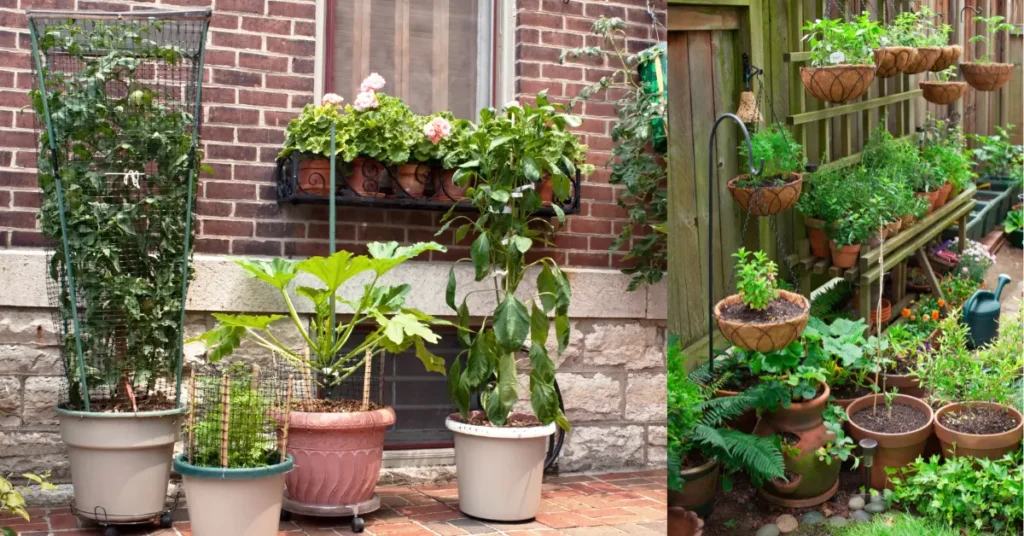
Preparing the Container Garden for Success
Setting up a healthy foundation for your container garden is crucial to ensure plants receive the nutrients and water they need. Quality soil, good drainage, and mindful watering are key to successful container gardening.
Ideal Soil Mixes for Different Vegetables
Soil quality is crucial in containers, where plants rely entirely on their soil for nutrients. Use a high-quality potting mix enriched with compost for most vegetables. For example, leafy greens may require a lighter mix, while tomatoes and peppers benefit from heavier, nutrient-dense soil.
Importance of Drainage and Watering Considerations
Good drainage prevents root rot and allows plants to thrive. Ensure each container has adequate drainage holes and use saucers to catch excess water. Be mindful of your plants’ water needs; for instance, tomatoes and peppers require regular watering, while herbs like rosemary prefer drier soil.
Planting and Maintaining Your Container Garden
Once your containers are prepared, it’s time to plant! Planting and maintaining vegetables in containers involve some unique considerations to keep plants healthy and productive.
Basic Planting Guidelines for Popular Vegetables
When planting vegetables in containers, pay attention to seed depth and spacing. Each plant has specific requirements, so following instructions on seed packets or plant tags will ensure they have the space to grow. Remember that vertical gardening can help when space is limited.
Fertilizing and Mulching for Container Health
Container plants benefit from regular fertilization, as nutrients in potting soil can deplete quickly. Use an organic liquid fertilizer or slow-release granules for best results. Adding a layer of organic mulch, like compost or straw, can help retain moisture and keep soil temperatures consistent. Better Homes & Gardens offers more tips on fertilizing container gardens.
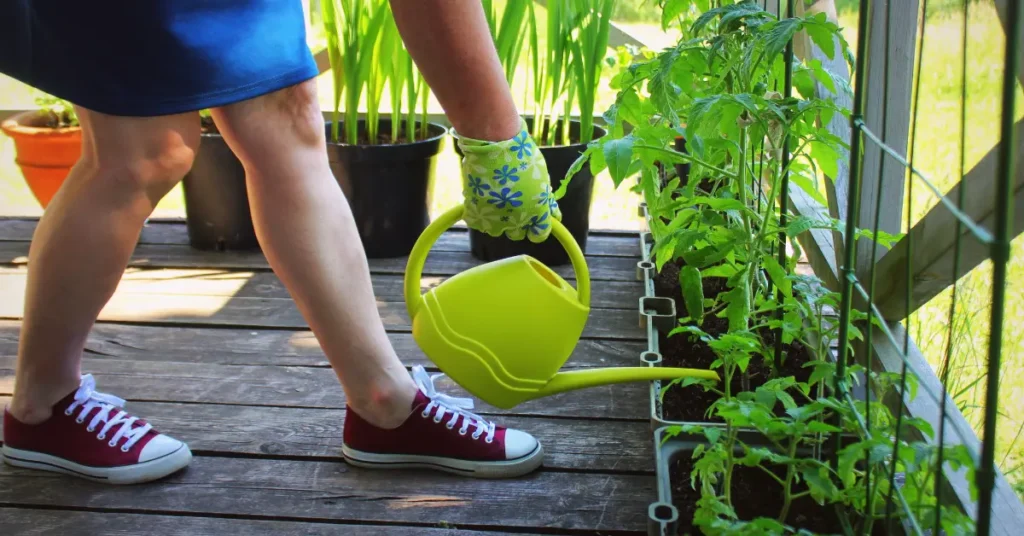
Sunlight and Temperature Control in Urban Gardening
In urban settings, finding optimal sunlight and managing temperature can be challenging. However, by understanding your plants’ light needs and using creative positioning, you can optimize your container garden’s growing environment.
Understanding Sunlight Needs for Different Vegetables
Most vegetables require at least six hours of sunlight daily, although some, like lettuce and spinach, prefer partial shade. Use sunny balconies or windowsills for sun-loving plants, and consider grow lights for low-light spaces.
Using Urban Space Creatively to Maximize Sunlight Exposure
In urban spaces, making the most of available light is crucial. Consider movable containers to reposition plants throughout the day or reflective surfaces to amplify sunlight. Rooftops, fire escapes (if allowed), and ledges can also be great spots for maximizing sunlight. For more creative ideas, Rural Sprout’s container gardening tips offer inspiration for urban gardeners.

Watering Techniques for Healthy Container Plants
Watering container plants requires a balance, as plants in containers tend to dry out faster than those in the ground. To avoid over-watering or under-watering, understanding the specific needs of each vegetable and adjusting based on the weather is essential.
Watering Frequency for Vegetables in Containers
Vegetables like tomatoes and peppers need regular, consistent watering, while herbs such as thyme and rosemary prefer a bit more dryness. A general rule is to water when the top inch of soil feels dry, but during hot days, containers may need daily watering. You can use self-watering containers to make this process easier and maintain even moisture levels.
Simple Methods to Avoid Over-Watering or Drying Out
To prevent over-watering, ensure containers have proper drainage holes, and avoid using trays that collect excess water. Mulching with organic materials, like straw or shredded leaves, can also help retain moisture without waterlogging the soil. If you’re new to gardening, our beginner’s guide to watering plants has further tips for managing water in urban gardens.

Managing Pests and Diseases in Container Gardens
Container gardens, while generally easier to manage for pests, still face challenges, especially in urban settings. Common pests like aphids, spider mites, and caterpillars can impact growth, but natural solutions are available to control these invaders without harmful chemicals.
Identifying Common Pests in Urban Gardening
Inspect plants regularly for signs of pest infestation, such as small holes in leaves or webbing under foliage. Aphids and spider mites are common in container setups, as they can easily spread in close quarters. Companion planting, as discussed in our companion planting guide, can naturally repel many pests while supporting your vegetables’ health.
Natural Solutions for Pest Management
To deter pests, try spraying plants with a solution of water and mild soap or use neem oil as an organic pesticide. Placing garlic or marigolds near your vegetable containers can also repel pests. Pest management tips provide additional insights into organic pest control methods.
Seasonal Care and Rotation for Vegetable Containers
Container gardening in urban spaces is an all-year-round activity if you adjust plants based on seasons and practice crop rotation. Seasonal care, such as moving containers indoors during colder months, helps extend the growing season and reduce pest buildup.
Seasonal Planning for Container Gardening
In warmer months, tomatoes, peppers, and cucumbers thrive in containers, while in cooler weather, greens like kale, chard, and spinach flourish. During winter, move containers indoors or consider cold-hardy vegetables if you have outdoor space.
Rotating Crops to Maximize Harvests and Soil Health
Rotating crops in your containers helps prevent nutrient depletion and reduces the risk of diseases specific to certain vegetables. For example, follow a leafy crop like lettuce with a root crop like carrots to keep soil balanced. This crop rotation guide from The Old Farmer’s Almanac offers further guidance on how to practice rotation effectively in containers.
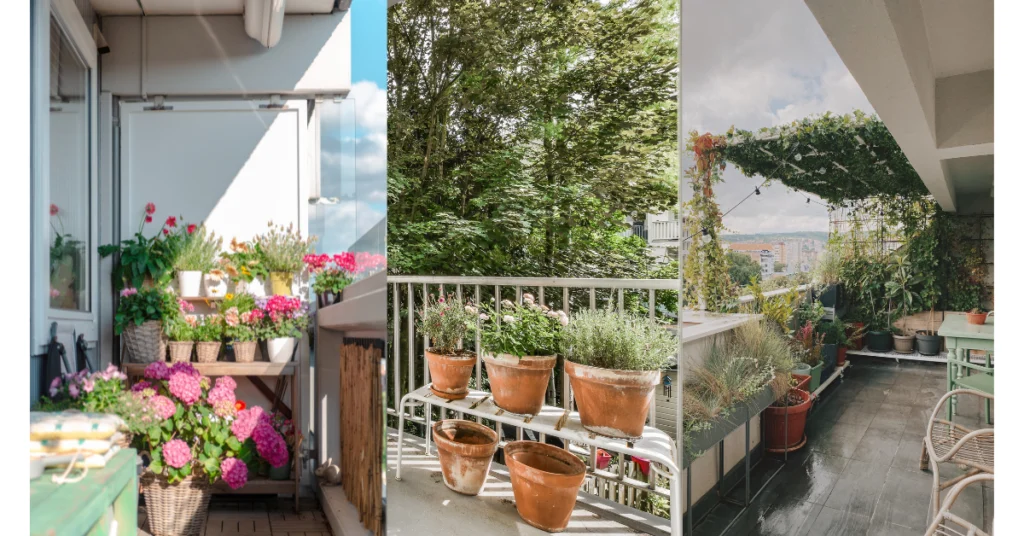
Harvesting Tips for Container Vegetables
Harvesting is the most rewarding part of container gardening. Knowing when and how to harvest ensures you get the best flavor and nutrition from your vegetables while encouraging continued growth.
Signs to Look for When Vegetables Are Ready for Harvest
Each vegetable has unique signs of maturity. For example, tomatoes should be fully red or orange (depending on the variety) before harvesting, while leafy greens can be cut as soon as they reach your desired size. Regular harvesting encourages more production, especially for plants like lettuce, which will continue to produce if cut at the base.
Proper Techniques to Ensure a Steady Supply
Using the correct technique for harvesting can prolong your plant’s life and keep vegetables coming. For leafy greens, use scissors to snip individual leaves as needed, while root vegetables like carrots require gentle pulling to avoid disturbing other plants. For more vegetable-specific harvesting techniques, check out Gardener’s Supply’s harvesting guide.



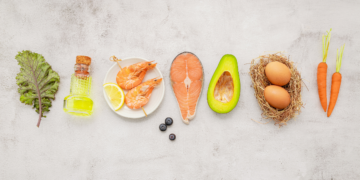














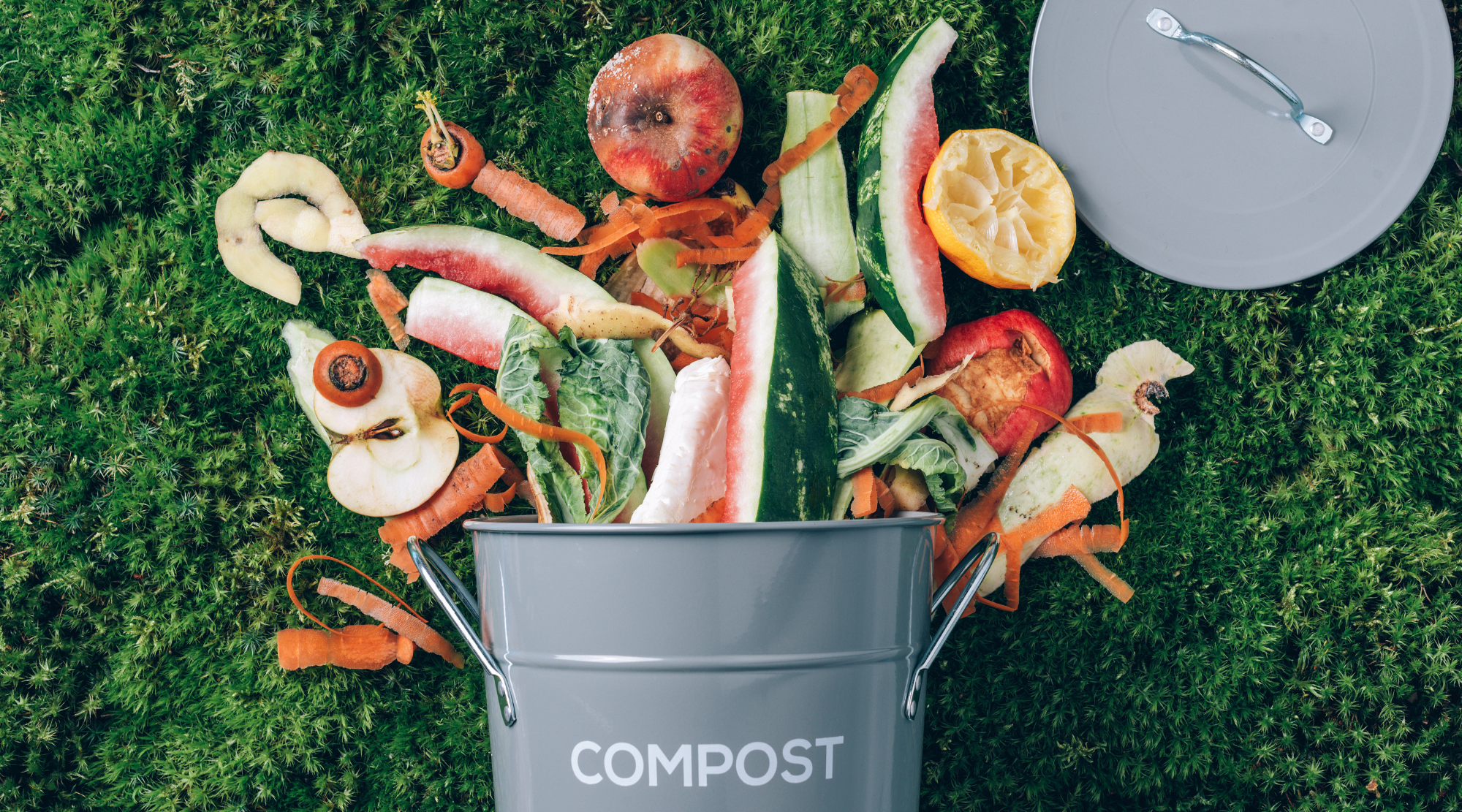




Comments 2